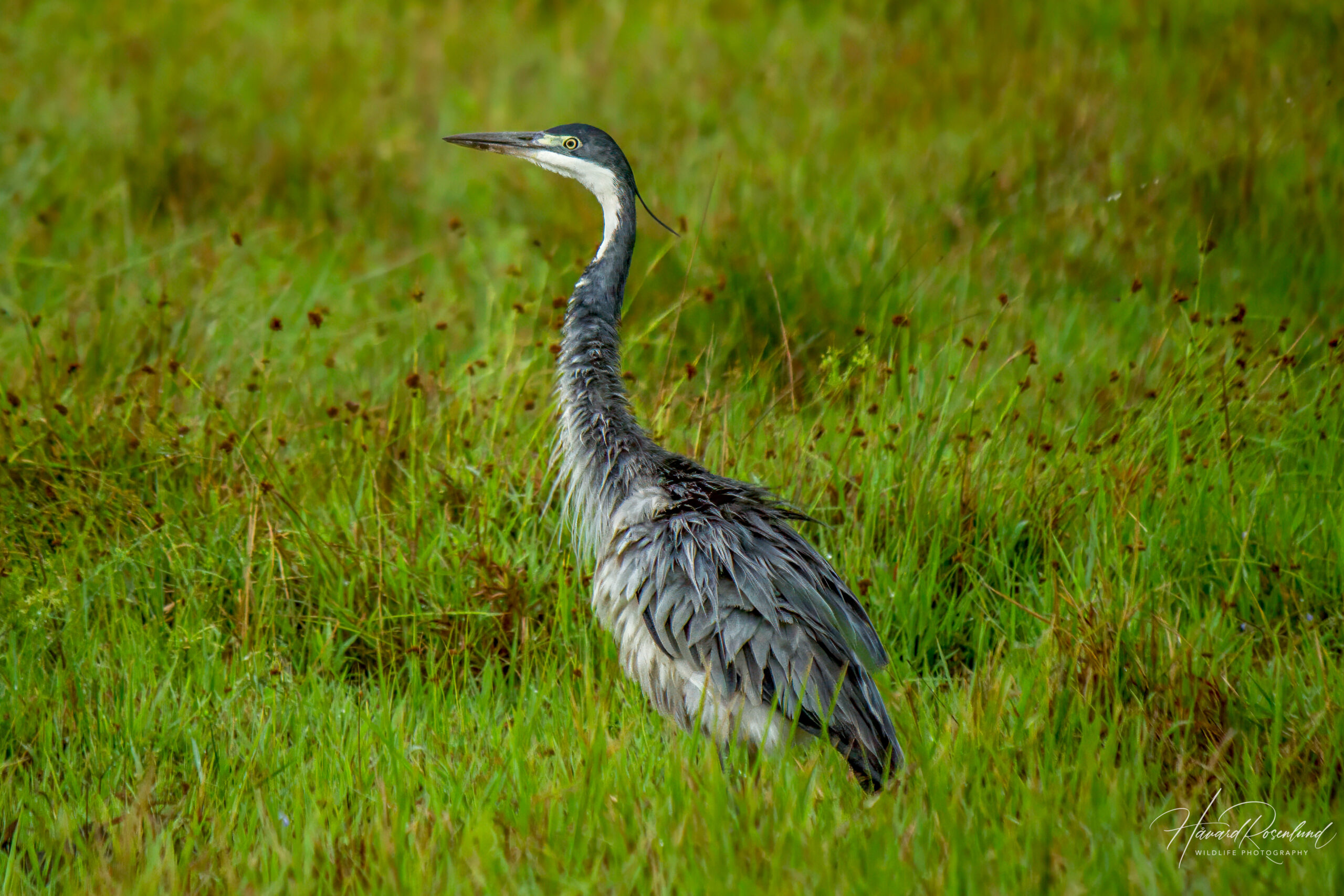Description
The black-headed heron (Ardea melanocephala) is a striking species of heron commonly found in the grasslands of sub-Saharan Africa. It is distinguished by its black head and neck, contrasting with a grey body and white chin. This heron stands at about 85 cm (2 ft 9 in) tall with a wingspan of 150 cm (4 ft 11 in), making it nearly as large as the grey heron (Ardea cinerea). The adult heron’s plumage is primarily grey, with lanceolate plumes on the neck and back. The legs are black, and the upper bill is black while the lower bill is yellow
Habitat & Range
This species is native to sub-Saharan Africa and Madagascar. It is mainly resident but some birds in West Africa migrate further north during the rainy season. The black-headed heron thrives in open habitats like wet meadows, damp pastures, farmlands, grasslands, shallow marshes, edges of rivers, ponds, and lakes. It adapts well to human-altered environments, even breeding in urban areas.
Diet & Foraging Behavior
The black-headed heron is a solitary feeder, known for its methodical hunting technique. It feeds primarily by walking slowly, stalking through the grass, and using neck swaying before thrusting at its prey. It feeds on a wide variety of terrestrial invertebrates and vertebrates, including insects, earthworms, fish, frogs, lizards, and small mammals. It commonly feeds at night.
Breeding & Nesting
Breeding typically occurs in the rainy season, although in some areas, it may happen year-round. During courtship, the iris turns ruby red, and the bird engages in various displays, such as a stretch display, where it points its bill upward and inflates its chin and throat. Nests are built high in trees, in reed beds, or on the ground, often in mixed-species colonies. The flimsy nest, built of twigs, takes about 15 days to construct. Both parents are involved in brooding and shading the nestlings. The clutch size ranges from 2 to 6 pale green-blue eggs, with an incubation period of about 25 days. The young are independent by 60 days.
Status
The black-headed heron is widespread throughout Africa and is one of the most numerous and commonly seen large herons on the continent. Its population has expanded and increased, benefiting from human-made pastures, dams, reservoirs, and urbanized habitats. It is listed as least concern on the IUCN Red List.







